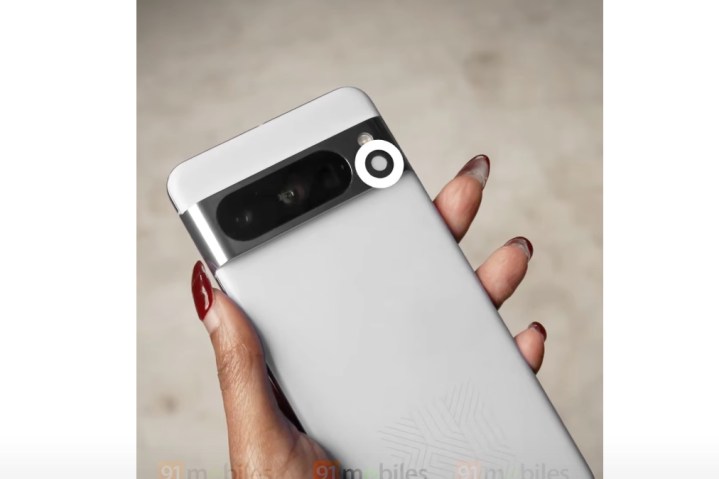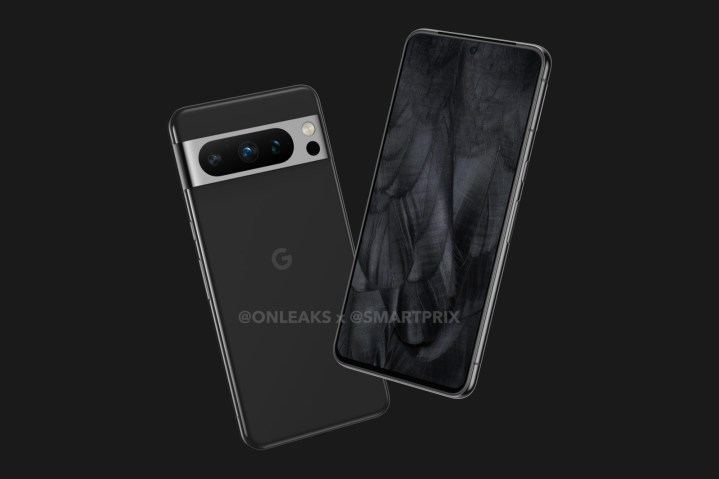
In a typically predictable fashion for unreleased Google hardware, the upcoming Google Pixel 8 series phones have been appearing in leaks almost every few weeks. After rumored marketing renders and camera details appeared online, tipster Yogesh Brar shared the core specifications of the Pixel 8 Pro.
The Pixel 8 Pro will reportedly feature a 6.7-inch QHD+ (1440 x 3120 pixels) LTPO OLED display with a 120Hz refresh rate, which is the same as the Google Pixel 7 Pro. That means you get a screen with a respectable sharpness of 512 pixel-per-inch and dynamic refresh rate adjustment.
Google Pixel 8 Pro
– 6.7" QHD+ LTPO OLED, 120Hz
– Google Tensor G3 + Titan chip
– 12GB RAM
– 128/256GB storage
– Camera: 50MP (OIS) + 64MP UW + 48MP (Tele)
– Selfie: 11MP
– Temperature sensor, Ultrasonic FP
– Android 14
– 4,950mAh battery, 27W wired chargingLaunch: October
— Yogesh Brar (@heyitsyogesh) July 17, 2023
The Tensor G3 chip will power the device. This chip, once again, is said to be based on Samsung Exynos reference design. Google will reportedly take until the tenth-generation Pixel to adopt a fully self-designed Tensor silicon. Similar to last year’s Tensor G2 chip, it will be accompanied by the in-house Titan security chip for storing sensitive information and handling secure boot.
RAM and storage configurations for the Pixel 8 Pro remain the same as its predecessor at 12GB of LPDDR5 module and a choice between 128/256GB of UFS storage. Notably, the tipster doesn’t mention a 512GB storage variant.

The camera department is where the Pixel 8 Pro saves the meaty part of its upgrade quota. The primary snapper relies on a 50-megapixel optically stabilized sensor, which matches the figures on the Pixel 7 Pro. However, Google is said to be using the newer Samsung ISOCEL GN2 sensor this time around instead of the 50-megapixel ISOCEL GN1 sensor that we saw on the Pixel 7 Pro.
Notably, the 12-megapixel ultrawide sensor is being swapped in favor of a 64-megapixel sensor on the Pixel 8 Pro. This is a massive leap, and theoretically, images from the main and the ultrawide snapper will be at par in terms of detail and that signature “Pixel photo” appeal.
However, the Pixel 7 Pro’s 48-megapixel telephoto camera is apparently being carried over to the Pixel 8 Pro. Like we saw last year, it’s a periscope-style telephoto camera that promises a 5x lossless optical zoom range.

Once again, we’re hearing about a temperature sensor on the upcoming Google flagship. The battery capacity is reportedly 4,950mAh, which isn’t too shabby, but wired charging support is still abysmally slow at 27W. For comparison, the OnePlus 11 juices up at 80W with a wire, while its successor that arrives early next year will reportedly set the benchmark even further with 150W charging support.
Google is still months away from the launch of the Pixel 8 series, but it looks like there are no big surprises in tow this time around. The core design remains the same two-tone metal-glass affair, while the internal hardware is also a modest iterative update.
It would be interesting to see if Google can deliver some meaningful functional surprises with Android 14 on the software side, but we’ll have to keep waiting to see what happens on that front. An official announcement is expected at some point in October.

